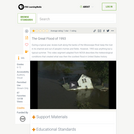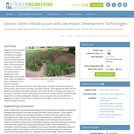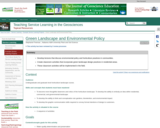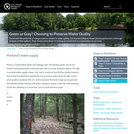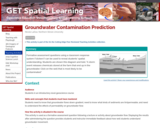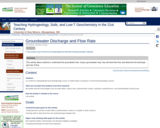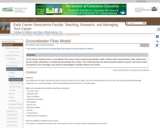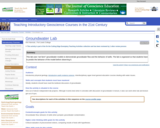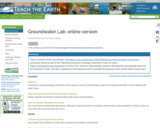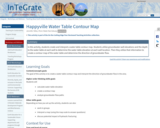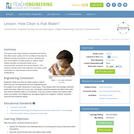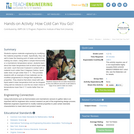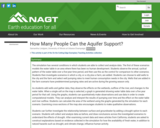Groundwater accounts for only 0.75% of all water on Earth, yet it is a precious resource for the biosphere. In the United States, about one-fifth of the population taps into the groundwater reservoir of the hydrologic cycle as their main source of drinking water. However, worldwide, about 40% of all irrigation water comes from groundwater, and up to 80% of groundwater withdrawals are used for agriculture. Groundwater is also at risk and vulnerable to pollution, especially in areas with karst topography such as Tampa FL. Thus, the more people who understand the potential and the problems associated with groundwater, the better are the prospects for this resource.
Student materials for this exercise include a Microsoft Excel spreadsheet with with data for dye tests and elevations, a .zip archive with two versions of the topographic map (PDF and JPG), as well as the instruction sheet. The exercise is divided into three parts.
In Part I, students study the Sulphur Springs topographic quadrangle and identify features of karst topography on the map. This part of the exercise also reviews basic groundwater terminology.
Part II involves transferring hydraulic head information from Microsoft Excel to a simplified sketch map of the quadrange and drawing contour lines on the potentiometric surface. Next, students use the contour lines to add arrows indicating the direction of groundwater flow. Finally, students apply their knowledge to determine which lakes could be affected by a toxic spill within the quadrangle.
In Part III, students study the results of dye tests in the Sulphur Springs quadrangle to analyze the flow of groundwater. They also use elevation data to construct a vertical cross section that illustrates the ground surface, the water table, and the potentiometric surface for the Floridan aquifer, and they relate the cross section to features on the topographic map.
(Note: this resource was added to OER Commons as part of a batch upload of over 2,200 records. If you notice an issue with the quality of the metadata, please let us know by using the 'report' button and we will flag it for consideration.)
